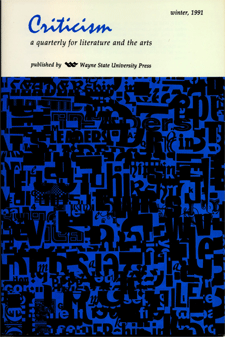Volume 33, Issue 1 (1991) English Renaissance Literature
Editor's Note
Over the last decade or so, English Renaissance literature has served as a laboratory for testing a variety of new scholarly and critical approaches. Feminism(s), the New Historicism, and Cultural Materialism, in particular, have fundamentally changed the critical questions that engage the scholars in this field just as the theoretical selfconsciousness of late twentieth-century literary interpretation has raised critical debates to new levels of sophistication. The essays gathered in this number of CRITICISM, the product both of editorial serendipity and of professional solicitation, illustrate the kinds of inquiry currently being conducted in the field of English Renaissance literature. They share the desire to engage in historical analysis, but they each confidently pursue their interpretive aims free of the need to engage in those self-defensive methodological polemics that marked such scholarly writing in its earlier phases. Examining poetic, dramatic, and prose texts from the mid-Tudor to the Restoration periods, the authors of these essays collectively focus our attention on the dynamics of cultural change and the place of literary discourse in social, political, and economic life of the time. Their interpretations of English Renaissance literary works artfully blend close-up textual analysis with broadly-focussed cultural criticism.
Articles
The Production and Communication of Knowledge in William Baldwin's Beware the Cat: Toward a Typographic Culture
Terence N. Bowers
Tamburlaine and the Body
Mark Thornton Burnett
The Politics of Spenser's Amoretti
Catherine Bates
Reading and Writing in Shakespeare's Romances
David M. Bergeron
Typology and the Ethics of Tragedy in Samson Agonistes
Christopher Kendrick
Book Review
Book Reviews
Criticism Editors

